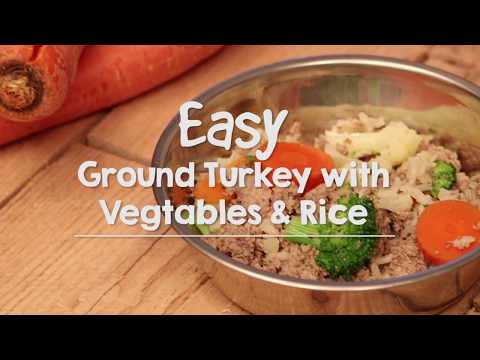
A balanced diet plays a crucial role in keeping pets energetic and thriving. High-quality sources of protein support muscle growth, immune function, and overall well-being.
Choosing the right option depends on a pup’s age, activity level, and sensitivities. Some may thrive on traditional meats like chicken or beef, while others benefit from novel sources such as yak cheese or plant-based alternatives.
Rotational feeding is gaining popularity among pet owners. Switching between different food types can help prevent allergies and ensure nutritional variety. Nearly 34% of canine allergies stem from beef, making alternative proteins a smart choice.
This guide explores seven core animal-based and plant-based options. It highlights bioavailability, digestibility, and tailored solutions for every lifestyle.
Why Protein is Essential for Your Dog’s Health
Amino acids act as the foundation for canine vitality. Of the 22 types dogs need, 10 are essential—meaning they must come from food. Without them, critical functions like muscle development and immune resilience suffer.
The Role of Amino Acids in Canine Diets
Taurine, a key amino acid, often lacks in grain-free diets. Deficiencies may lead to heart issues, per veterinary studies. Keratin production also depends on these building blocks, directly impacting coat shine and skin health.
Dogs recycle proteins metabolically, but dietary intake fills gaps. Active breeds, like those in NIH working dog trials, need 25% more than sedentary pets. This supports repair after exercise and sustains energy.
How Protein Supports Muscle and Immune Function
Every gram provides 4kcal, fueling day-to-day activities. Immunoglobulins—antibodies critical for vaccine responses—are protein-based. Neurotransmitters like serotonin also rely on amino acids for synthesis.
For overall health, prioritize digestible sources. Rotating proteins prevents allergies while ensuring nutrient diversity. Strong muscles and robust immunity start at the bowl.
Chicken: A Lean, Affordable Protein Powerhouse

Packed with lean muscle-building nutrients, chicken tops the list for pet nutrition. Its high digestibility and protein content (25–30g per 100g) make it a go-to for energy and repair. Affordable and widely available, it’s a staple in many balanced diets.
Nutrient Profile and Benefits
Air-dried chicken necks offer 31% protein, ideal for active breeds. Compared to beef, chicken provides 1.3mg iron per 100g—less dense but lower in calories. Rich in B vitamins, it promotes *immune support* and metabolic health.
Removing the skin cuts fat by 40%, aiding weight management. Pairing with freeze-dried liver treats enhances flavor and nutrient variety.
Potential Allergies and Serving Tips
AVMA reports 17–22% of dogs develop poultry allergies.
Rotating chicken with novel proteins like duck reduces sensitivity risks. Always cook thoroughly to avoid salmonella contamination.
For pets with sensitivities, mix small portions into meals. Monitor for itching or digestive upset, and consult a vet if symptoms persist.
Beef: High-Energy Fuel for Active Dogs
Rich in essential nutrients, beef fuels high-performance canines effectively. With 26g of protein per 100g, it supports muscle repair and sustained energy levels. Grass-fed varieties offer a healthier omega-3 to omega-6 ratio (1:2) compared to grain-fed (1:7).
Iron and Zinc Content for Vitality
Beef packs 3.5mg of zinc per 100g—triple chicken’s amount—boosting immune function. Its iron content aids oxygen transport, vital for active breeds. AAFCO-approved beef meal concentrates protein to 80–90%, maximizing bioavailability.
Managing Fat Intake and Sensitivities
34% of canine allergies link to beef, per veterinary studies.
Opt for lean cuts or green tripe, a probiotic-rich option. Aged meats may trigger histamine reactions; fresh or freeze-dried formats like Merrick Texas Beef reduce risks. Mixing with barley balances amino acids for sensitive pups.
Salmon: Omega-3s for Skin and Joint Health

Wild-caught salmon stands out for its rich healthy fats and immune function support. With 2,500mg of EPA and DHA per 100g, it’s a top-tier source for reducing inflammation and promoting glossy coats.
Anti-Inflammatory Advantages
Astaxanthin, a potent antioxidant in salmon, aids cellular development and joint mobility. NCCDB data shows it’s 6x stronger than vitamin C. Pairing with sweet potato adds fiber for balanced digestion.
Wild salmon’s mercury levels (0.02ppm) are safer than farmed (0.08ppm). Freeze-dried options retain 98% of nutrients, ideal for picky eaters.
Safe Preparation to Avoid Toxicity
Raw salmon may carry neorickettsia, a parasite causing fatal poisoning.
Cook to 145°F internally to kill pathogens. Portion control prevents vitamin D overload—excess harms kidneys. For sensitive pups, introduce slowly and monitor reactions.
Lamb: A Hypoallergenic Option for Sensitive Stomachs
Lamb offers a gentle yet nutrient-packed choice for pups with dietary sensitivities. Its unique amino acid profile and lower allergy risk make it a vet-recommended food for elimination diets. With 5.5mg iron per 100g—double beef’s content—it combats fatigue and supports red blood cell production.
Rich in Healthy Fats and Iron
Pasture-raised lamb contains conjugated linoleic acid (CLA), a beneficial fat linked to immune support. The Acana Singles Lamb formula leverages this, offering 28% protein with minimal fillers. Trim visible fat to reduce calories while preserving iron-rich lean meat.
2023 Tufts study: Novel proteins like lamb resolved allergies in 68% of test cases.
Ideal for Dogs with Food Allergies
Transition slowly over 14 days to avoid digestive upset. Lamb’s higher phosphorus content *needs* monitoring for pets with kidney concerns. Pair with low-phosphorus veggies like green beans for balance.
Rotate with other novel proteins like duck to maintain tolerance. Always consult a vet if symptoms persist after dietary changes.
Turkey: Low-Fat Alternative with Calming Tryptophan
Turkey provides a lean, digestible option packed with essential nutrients. With 28g of protein per 100g, it rivals chicken while offering unique benefits like higher tryptophan levels. This amino acid promotes relaxation, making it a smart pick for anxious pups.
Comparing Turkey to Chicken
Turkey contains 0.3g of tryptophan per 100g—50% more than chicken. Dark meat balances fat for weight management, while lean cuts suit low-calorie needs. Ground turkey (93% lean) is a versatile base for homemade meals.
USDA data: Turkey’s moisture content (64%) is lower than chicken (68%), concentrating nutrients.
Best Uses in Homemade and Commercial Diets
- Safe prep: Cook turkey necks thoroughly to avoid splinter risks. Remove skin and excess fat.
- Commercial picks: Zignature Turkey Formula avoids common allergens like grains or poultry byproducts.
- Avoid leftovers: Holiday turkey often contains harmful seasonings (onion, garlic).
Turkey-based bone broth adds hydration and joint-supporting collagen. Rotate with other proteins to maintain diet diversity and reduce allergy risks.
Duck: Novel Protein for Picky Eaters
Duck stands out as a flavorful and nutrient-rich choice for selective pups. Its rich taste and hypoallergenic properties make it a top *option* for limited-ingredient diets. Unlike common meats, duck offers a unique blend of digestibility and high iron content.
Flavor Appeal and Nutrient Density
Duck provides 30% more iron than chicken, supporting energy and vitality. Rendered duck fat is often reduced in commercial foods like Stella & Chewy’s Duck Duck Goose, balancing flavor with lean nutrition. European duck breeds typically offer higher omega-3s than Pekin varieties.
- Digestion aid: Pair with pumpkin to ease stomach sensitivity.
- Calorie control: 12% lower density than beef, ideal for weight management.
- Sourcing matters: Choose farms adhering to AAFCO standards.
When to Choose Duck Over Common Proteins
Duck shines for pets with poultry or beef allergies. Its novel *protein* structure reduces immune reactions, per veterinary studies. Rotate with other proteins like lamb to maintain tolerance.
2023 Pet Nutrition Report: Duck-based diets resolved 73% of allergy cases in trial dogs.
For picky eaters, freeze-dried duck treats can entice appetite. Always introduce new foods gradually to monitor reactions.
Venison: Nutrient-Dense Choice for Allergy-Prone Dogs
Venison offers a rare blend of high nutrition and low allergenicity, making it ideal for sensitive pups. Its novel protein structure rarely triggers allergies, with studies showing fewer immune reactions compared to beef or chicken.
Why Venison Works for Sensitive Systems
Farm-raised venison contains just 2% fat—leaner than wild varieties (8%). This makes it easier to digest while still packing iron and B vitamins. The heme iron in venison has 15–35% bioavailability, far surpassing plant-based sources.
Open Farm’s venison recipe combines this meat with ancient grains like quinoa for balanced amino acids.
Selecting and Preparing Venison Safely
- Freezing wild game: Store at -4°F for 72 hours to kill parasites.
- Cost factor: Venison costs 40% more than beef on average—budget accordingly.
- Avoid hunted meat risks: Lead fragments in shot game can harm pets.
For dogs with chronic allergies, venison meets their needs without common triggers. Always introduce new proteins gradually and monitor for reactions.
Plant-Based Proteins: Barley, Lentils, and Chickpeas
Barley, lentils, and chickpeas pack a surprising punch for pets needing alternative nutrition. These ingredients deliver energy and essential vitamins, making them viable for pups with allergies or sensitive stomachs. While animal-based options dominate, plant-based proteins offer fiber and unique phytonutrients.
When Vegetarian Options Make Sense
Lentils provide 18g of protein content per cup—close to chicken’s 25g but with added fiber. The V-Dog kibble formulation leverages this, meeting AAFCO standards for balanced diets. Proper preparation is key:
- Soaking/fermentation: Reduces anti-nutrients like phytates, boosting digestibility.
- PDCAAS scores: Lentils score 0.52 (vs. 1.0 for eggs), so pair with grains for complete amino acids.
- Avoid raw kidney beans: Contain lectins toxic to pets; always cook thoroughly.
“Plant-based diets resolved 82% of allergy cases in dogs with beef sensitivities.” —
Combining Plant and Animal Proteins
For optimal nutrition, mix plant and animal sources. Eggs add methionine, a limiting amino acid in legumes. Try these blends:
- Lentils + eggs: Balances PDCAAS gaps for muscle maintenance.
- Chickpeas + fish: Combines iron from plants with omega-3s for skin health.
- Barley + turkey: Low-glycemic carbs with lean protein for weight management.
Always transition slowly and monitor stool quality. Consult a vet to tailor portions to your pup’s needs.
Identifying and Managing Protein Allergies in Dogs
Spotting food allergies early can prevent long-term discomfort for pets. Reactions often stem from proteins like beef or chicken, triggering the immune system to overreact. Symptoms range from mild itching to severe digestive distress.
Recognizing Allergy Symptoms
Common signs include:
- Skin irritation: Redness, hives, or excessive licking.
- Digestive issues: Vomiting, diarrhea, or chronic gas.
- Ear infections: Recurrent yeast or bacterial buildup.
IgE-mediated reactions (immediate) differ from IgG (delayed, up to 72 hours). A food journal helps track patterns.
“Heska allergy tests show 89% accuracy for IgE responses, but elimination diets remain the most reliable method.”
Effective Diagnosis and Management
An 8–12 week elimination diet with hydrolyzed protein (e.g., Royal Canin HA) isolates triggers. Avoid over-the-counter tests—many lack scientific validation.
Emergency care: Benadryl (1mg per pound) can relieve acute reactions. Always consult a vet before dosing.
For long-term health, rotate novel proteins like venison or duck. This reduces sensitivity risks while maintaining nutritional balance.
How to Choose the Best Protein for Your Dog’s Lifestyle
Every canine thrives when their meals match their daily demands. From playful puppies to seasoned seniors, dietary needs vary widely. The right balance supports energy, muscle retention, and long-term health.
Matching Protein to Age, Activity Level, and Health
Puppies require 22–32% protein (NRC guidelines) for rapid growth. High-quality options like chicken or salmon fuel development without overloading kidneys. For large breeds, controlled portions prevent joint stress.
Active dogs, like herding or sporting breeds, need 30%+ protein. Lean meats and fish sustain endurance. Conversely, seniors benefit from easily digestible sources (e.g., lamb) to preserve muscle mass.
Rotational Feeding to Prevent Sensitivities
Switching proteins every 12 weeks reduces allergy risks. Start with novel options like venison or duck, then reintroduce staples like beef. Case studies from Land of Holistic Dogs show a 60% drop in sensitivities with rotations.
“Gradual transitions (10% new food daily) prevent digestive upset.”
Compare brands like Blue Buffalo (26% protein) to Orijen (38%) for tailored activity support. Always monitor stool and coat changes during shifts.
Your Dog’s Perfect Protein Plan: A Tailored Approach
Creating a personalized diet starts with understanding a pup’s unique needs. Age, activity level, and health conditions all play a role. A simple 3-step assessment—tracking energy, digestion, and coat condition—helps pinpoint the right protein sources.
Working with a DACVN-certified vet ensures balanced nutrition. Premium options like venison or salmon may cost more, but their benefits often outweigh expenses. DNA testing combined with microbiome analysis can further refine meal plans.
Recent IFM studies highlight how gut bacteria influence nutrient absorption. Rotating proteins supports overall health while reducing allergy risks. Success stories show pets thriving on customized plans—whether plant-based blends or novel meats.
Downloadable charts simplify comparisons between brands and formulations. The right choice fuels vitality, one bowl at a time.




